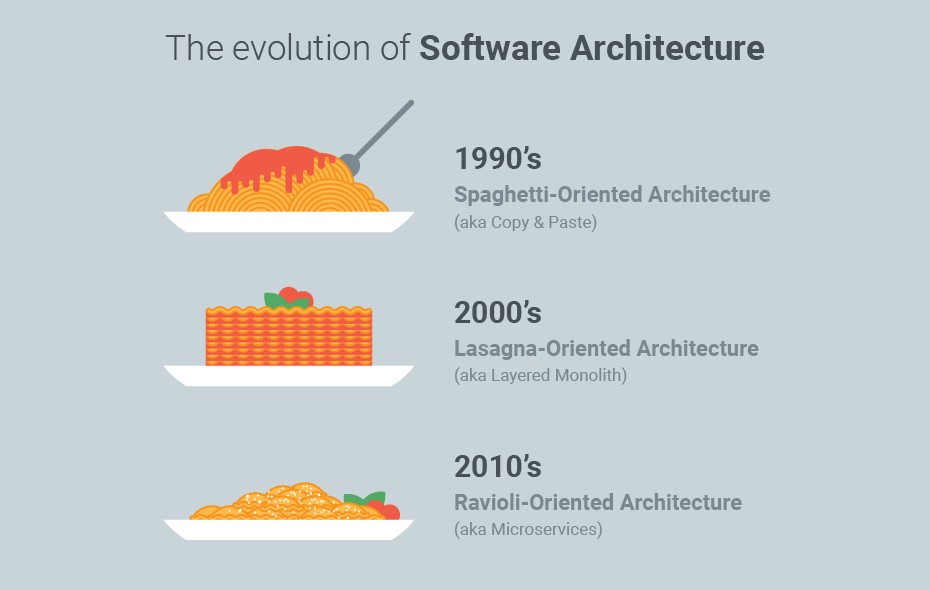Get in touch
Times have changed. The digital world has long since ceased to consist exclusively of websites, E-Mail and conventional E-Commerce. Connected cars, smartphones, tablets and laptops, wearables, smart homes and -speakers as well as in-store touchpoints such as kiosks, magic mirrors and endless aisles are just some of the touchpoints that consumers can use to interact with businesses and purchase goods. If we also consider third-party channels, partners and comparison portals, the sales channels are almost unlimited. And new ones are added every day.
This complexity also affects the technology that is used to run E-Commerce platforms. Until recently, monolithic architectures, complete with front- and backends integrated into the existing IT environment, determined the E-Commerce landscape – an approach that quickly reaches its limits today. Companies and customers demand speed, agility, flexibility and scalability. Companies want to build E-Commerce platforms based on solutions that are sustainable and can easily integrate new touchpoints. In turn, end customers want to be addressed individually and make their purchases at the time that suits them. The channel plays a subordinate role here – the main thing is that it works. Succinctly stated: customers expect the optimal shopping experience across multiple touchpoints. This is where “headless E-Commerce” comes into play.
“Headless E-Commerce” refers to an architecture in which the backend and frontend of an E-Commerce solution are separated from each other. The shop (frontend) is connected to the backend via flexible API interfaces. The backend does not care where the API calls come from, whether from a headless web frontend, a mobile app or an IoT device. In general, this API-based headless E-Commerce approach allows companies to integrate commerce functionality quickly and efficiently into any other system without compromising the overall architecture.
In traditional E-Commerce shops, on the other hand, the backend and frontend form a fixed, integrated unit. This monolithic, rigid core makes the integration of new applications or changes in the system more difficult, as the frontend itself does not provide any functionalities. In addition, traditional E-Commerce solutions usually require the frontend to be connected to the backend via complex, partly proprietary templating engines.
In other words, with a traditional E-Commerce architecture it is more difficult, more complex and less efficient to respond to changes in the market, customer buying patterns and technological developments. Adjustments are slow, new features have a long time-to-market.
The evolution of software architecture from a traditional “all-in-one” approach to a flexible headless model can be well-illustrated with the pasta analogy circulating in developer circles (Fig. 1). We can compare the architecture of the 1990s with spaghetti. At the time, code was so intertwined that every change in the software had far-reaching and mostly unpredictable consequences. Code was often written according to the “copy and paste” principle.
At the beginning of the millennium, software had changed into a multi-layered, monolithic architecture that resembled lasagna.
Today, the software architecture resembles Ravioli, with small, loosely connected, flexible elements (analogous to microservices) similar to those found in a headless approach.

This flexibility of a headless software architecture is also the key to designing E-Commerce solutions in such a way that customers always have an optimal user experience. It’s no longer just about building a shop for the web and making the E-Commerce transaction as efficient as possible. Rather, it is much more about interacting with customers in the way that works best for them – at the optimal time, at the optimal place and through the optimal channel. It is about building trust and long-term customer loyalty toward companies and brands. What companies need is an approach that gives them the flexibility to be prepared for new touchpoints without having to buy new software or completely overhaul their existing IT landscape. In view of the complexity of the E-Commerce environment mentioned above, as well as the countless known and (still) unknown touchpoints, a headless architecture offers a number of advantages, including:

As already mentioned, one of the greatest benefits of a headless architecture is speed. A headless solution is able to render dynamic content faster and without caching (keyword: Time to First Byte – TTFB). Positive effects on the business include higher conversion rates and significantly better Google rankings.
At AOE, we took a close look at headless and decided to develop our own Open Source frontend framework for headless E-Commerce, Flamingo. With Flamingo, we can take full advantage of this approach for our customers’ solutions, including the increased speed, which is also made possible by the API-First approach.